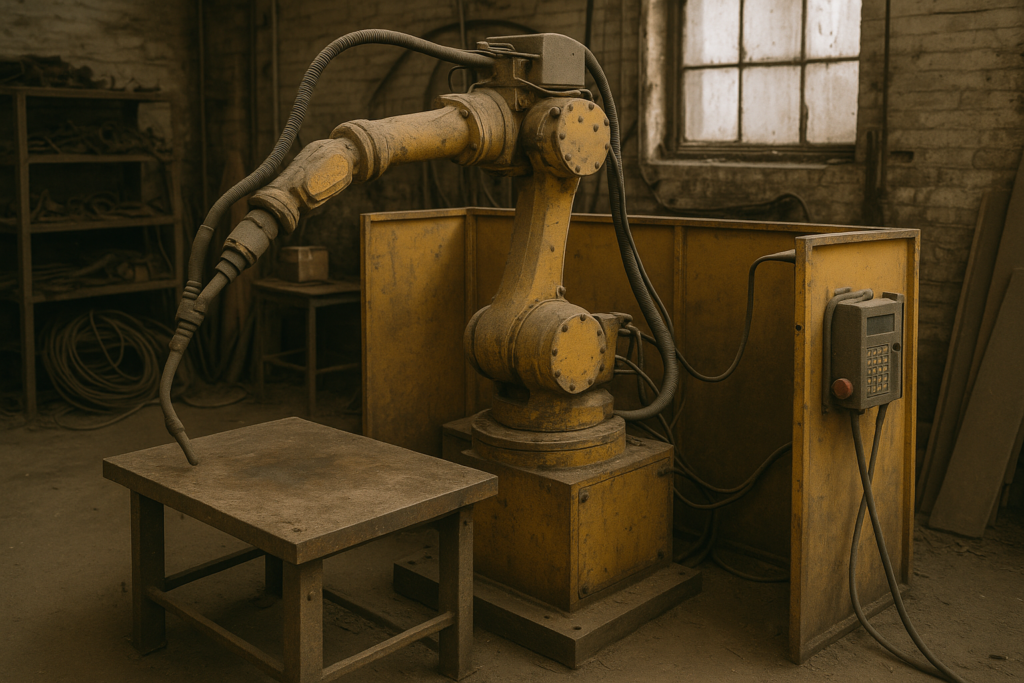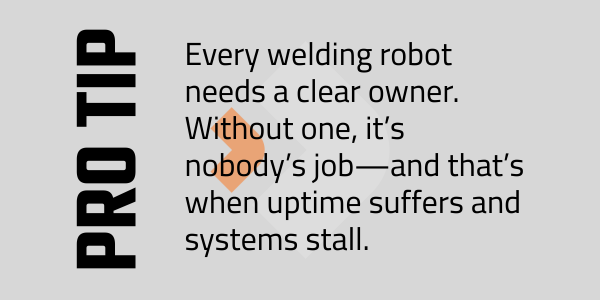The Dirty Secret of Welding Automation? Some Robots Never Pay Off
Let’s be honest, some robotic welding systems sit idle. Not because the technology is flawed, but because the buying process is broken.
We’ve taken calls from shops where a brand-new system was collecting dust, just 6 months after install. The robot was fine. The problem? Missed steps, mismatched expectations, and misalignment between what was sold and what was needed.
Here are the 5 most common mistakes that lead to regret, and how to avoid them.

One: Skipping the Application Review
What happens:
Shops buy robots before confirming whether their parts are even suitable for automation. They assume the robot will adapt. It doesn’t. Fixturing doesn’t hold. Joints don’t repeat. Weld quality tanks.
Real-world quote:
“We just assumed the parts would work. They didn’t. We had to redesign fixtures mid-project.” — Midwest Job Shop Owner
What to do instead:
Insist on a formal application review—with part drawings, tolerances, and expected throughput modeled. A vendor who skips this step isn’t selling automation. They’re selling problems.
Two: Over-Scoping the First Project
What happens:
You try to automate 10 different part families out of the gate. The result? Massive scope creep, programming headaches, and a delayed launch. Confidence erodes before the first weld is made.
Why it happens:
Buyers want to “maximize the investment.” But automation success isn’t about volume—it’s about velocity of results.
What to do instead:
Start with one high-impact part. Nail it. Then expand. Think of it like compound interest: small wins build capability and confidence over time.
Three: Underestimating the Role of the Operator
What happens:
A skilled welder is assigned to “watch the robot.” But no one trains them to run the cell. So it sits. Or worse, runs poorly and produces scrap.
Why it matters:
Automation doesn’t eliminate the need for skilled workers. It changes their job, from hands-on welder to technician, quality checker, and process optimizer.
What to do instead:
Design a training program with specific roles: operator, maintenance, and supervisor. The best systems come with built-in training tailored to your shift model and workforce experience.
Four: Assuming the Robot Will Handle the Fixturing
What happens:
The cell is installed, but parts aren’t consistently located. Welding paths fail. Quality is inconsistent. Your team ends up fighting offsets and chasing inconsistencies.
Why it’s so common:
Some buyers assume the robot will compensate for part variation. It won’t. Robots need consistent, repeatable fixturing to produce quality welds.
What to do instead:
Treat fixturing as part of the system, not an afterthought. A single-source supplier like CLOOS designs and validates the full setup, including robot, weld process, and fixture, so it all works together, from day one.
Five: Choosing Price Over Partnership
What happens:
Buyers select the lowest-cost vendor, then find out support is non-existent. When the robot needs help, it’s a 3-week wait and no local tech.
What it really costs:
Downtime at $5,000–$15,000/day. Operator frustration. Lost morale. A system that’s technically fine, but organizationally failed.
What to do instead:
Vet the vendor’s post-sale support model. Who’s your tech? Where’s your parts warehouse? Can they solve problems fast, or do they charge for every email?

How to Avoid These Mistakes?
Want to make sure your automation investment actually delivers?
Schedule a Strategy Session – No slides, no fluff, just an honest conversation with someone who’s helped companies like yours succeed with welding automation.
Request a Free Part & Process Review – We’ll review your part(s), walk through the workflow, and give you an honest assessment of automation fit.
